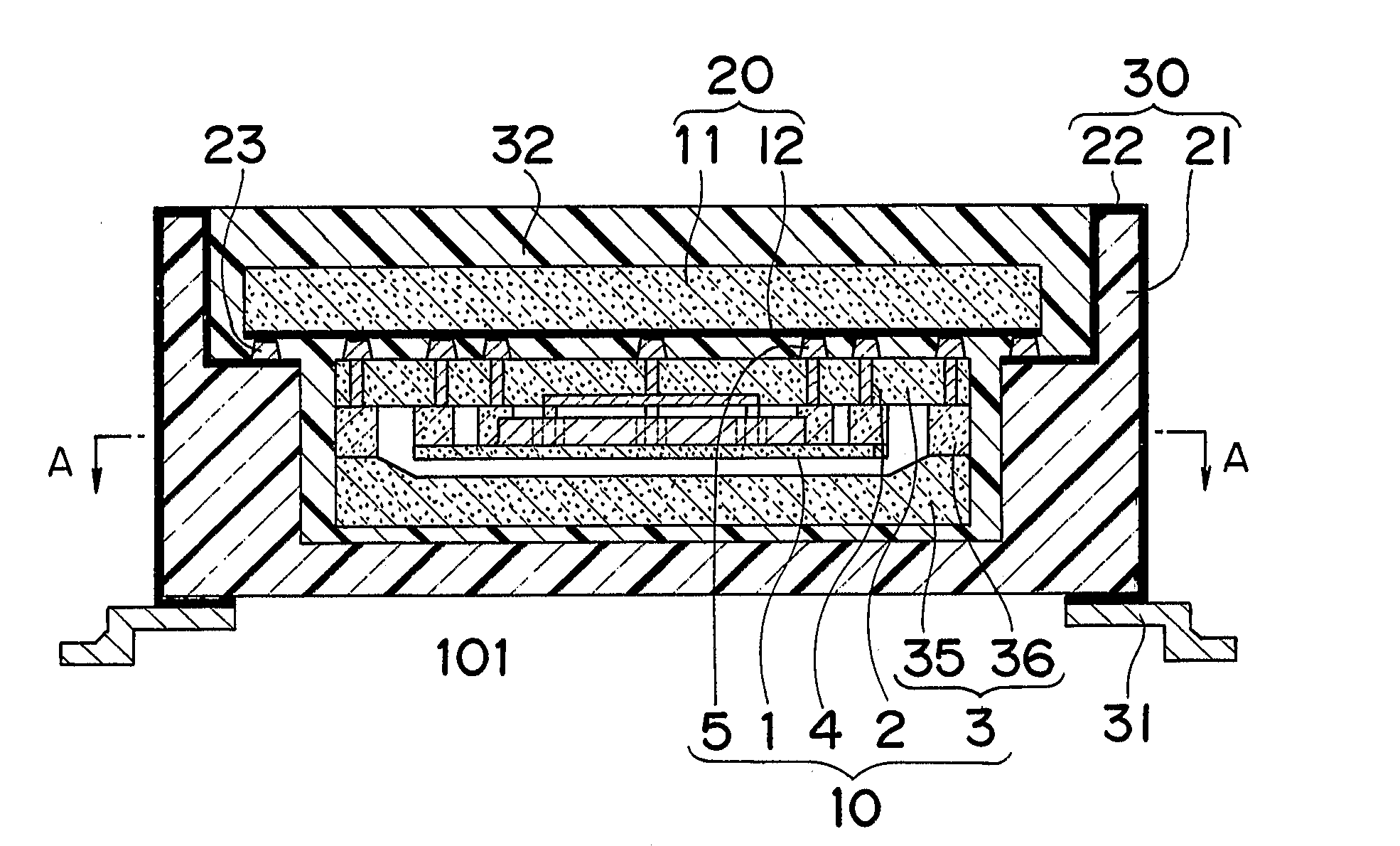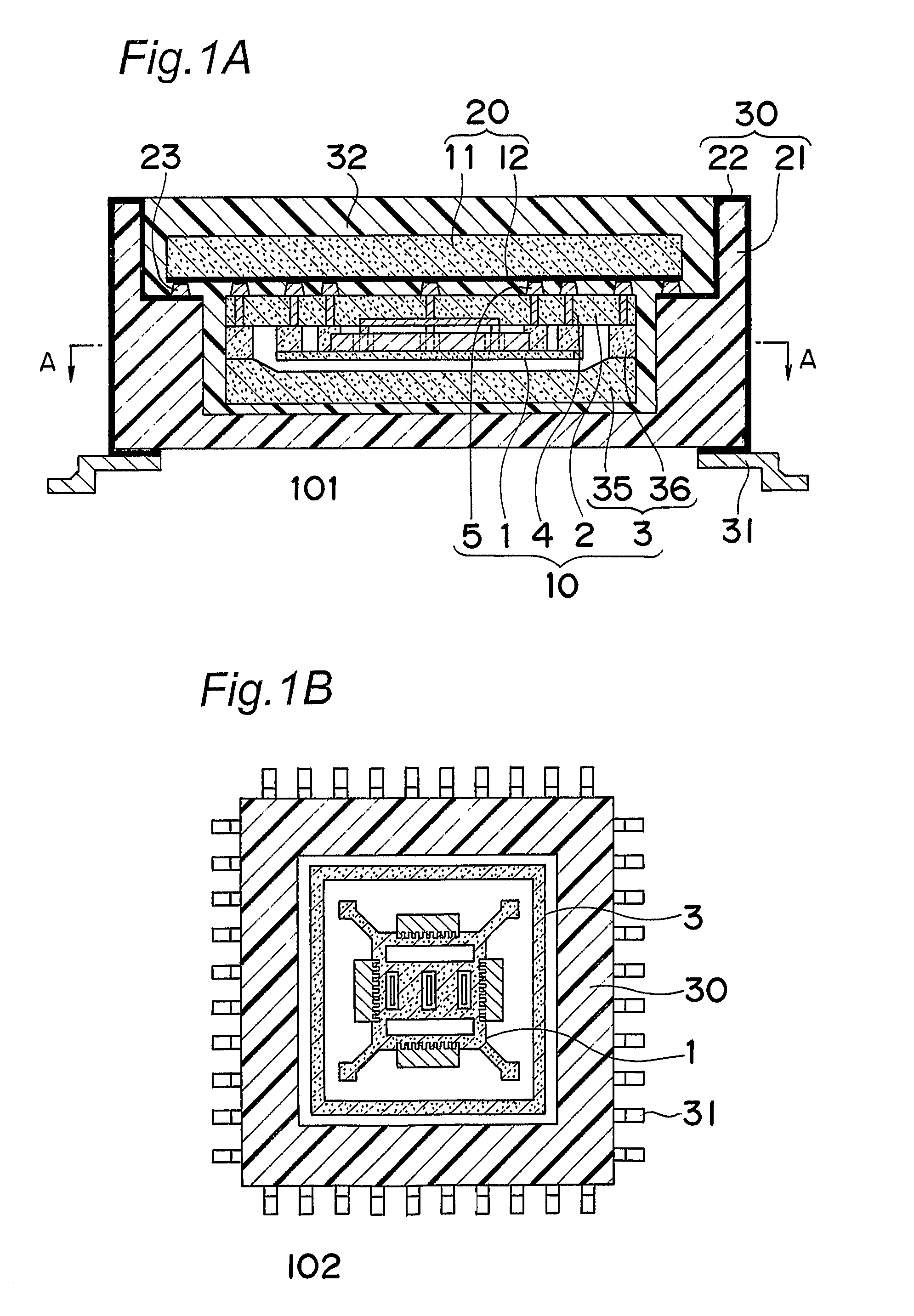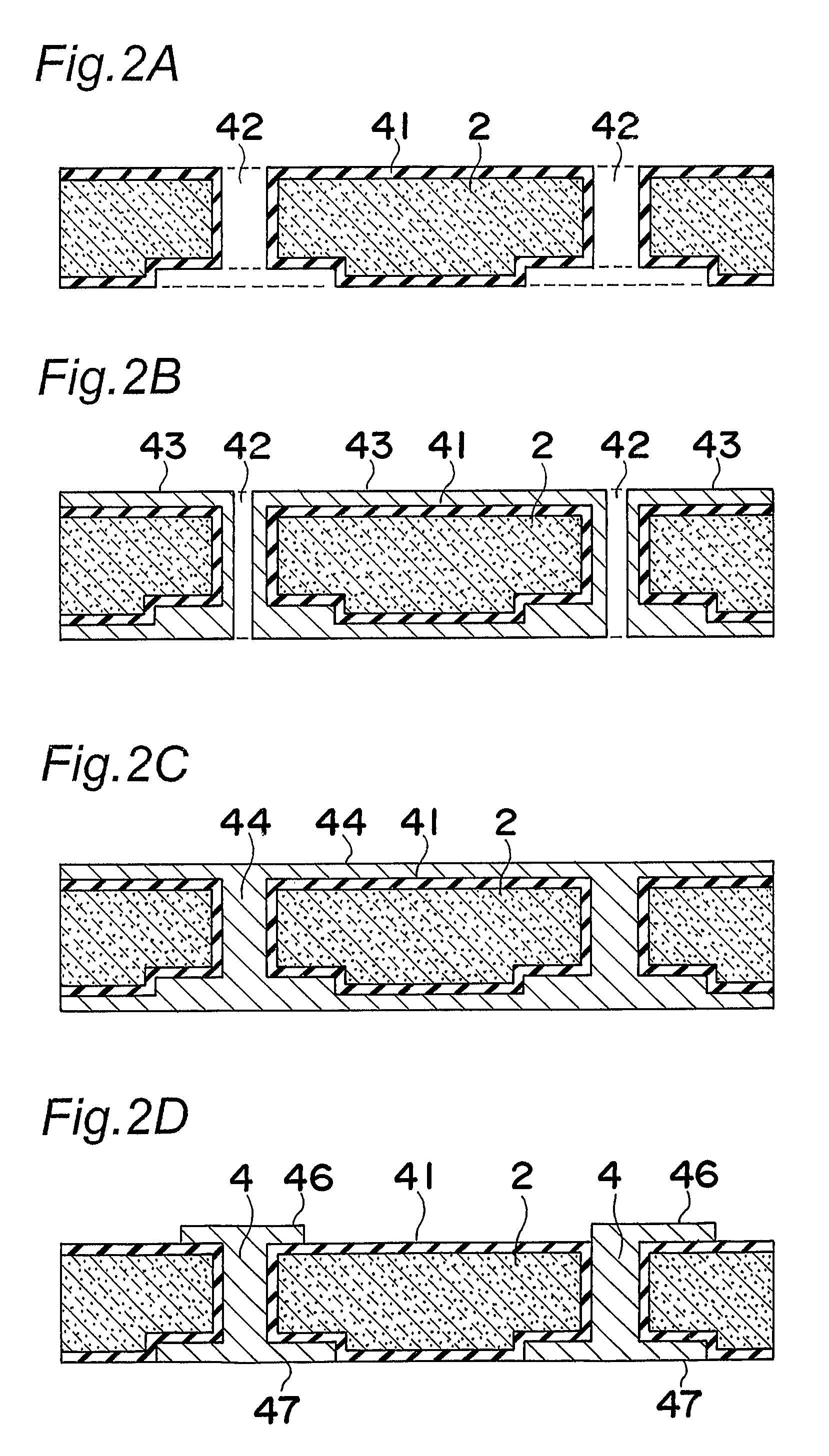Sensor device, sensor system and methods for manufacturing them
a sensor system and sensor technology, applied in the direction of fluid pressure measurement, acceleration measurement using interia forces, instruments, etc., can solve problems such as distortion or strain in the sensor body, and achieve the effects of reducing downsizing in the sensor system, facilitating downsizing, and facilitating the manufacture of sensor devices
- Summary
- Abstract
- Description
- Claims
- Application Information
AI Technical Summary
Benefits of technology
Problems solved by technology
Method used
Image
Examples
first embodiment
[0040]FIG. 1 is a sectional view showing the structure of a sensor system according to a first embodiment of the present invention, wherein FIG. 1A is a vertical sectional view of the sensor system, and FIG. 1B is a sectional view taken along the line A-A in FIG. 1A. This sensor system 101 is formed as an MEMS which includes a sensor device 10, an integrated circuit 20, an MID (Molded Interconnect Device) substrate 30, a mounting external electrode 31, and a sealing material 32. The sensor device 10 is designed to serve, for example, as an angular velocity sensor. The sensor device 10 includes a sensor body 1 made of a silicon-based material, an upper sealing member 2 made of a silicon-based material, and a lower sealing member 3 made of a silicon-based material. The term “silicon-based material” herein means that the material may include not only pure silicon but also impurity-doped silicon.
[0041]The upper sealing member 2 and the lower sealing member 3 are joined together to form ...
second embodiment
[0052]FIG. 3 is a vertical sectional view showing the structure of a sensor system according to a second embodiment of the present invention. In FIG. 3 and other figures, a component or element structurally or functionally identical to that in FIGS. 1A and 1B is defined by the same reference numeral or code, and its detailed description will be omitted. The sensor system 102 illustrated in FIG. 3 is mainly different from the sensor system 101 in FIGS. 1A and 1B, in that an MID substrate 30 is formed to interpose between a sensor device 10 and an integrated circuit 20 which are arranged in a stacked manner. The sensor device 10 is connected to a wiring pattern 22 through a mounting electrode 5, and the integrated circuit 20 is connected to the wiring pattern 22 through a mounting electrode 23. The MID substrate 30 is formed with an opening 25, and the wiring pattern 30 is also formed in the opening 25. Thus, the MID substrate 30 also relays the electrical connection between the senso...
third embodiment
[0055]FIG. 4 is a vertical sectional view showing the structure of a sensor system according to a third embodiment of the present invention. This sensor system 103 is mainly different from the sensor system 101 illustrated in FIGS. 1A and 1B, in that an anchor end of a mounting external electrode 31 is embedded in a substrate body 21 of an MID substrate 30. As with the sensor system 101, the mounting external electrode 31 in the sensor system 103 is formed as a stepwise bent pin. This structure can reduce a thermal strain which is likely to occur inside the sensor system 103 due to the difference in thermal expansion coefficient between the sensor system 103 and a circuit board onto which the sensor system 103 is mounted. Thus, the deterioration in sensor characteristics due to the thermal strain can be suppressed.
[0056]The mounting external electrode 31 may be embedded in the substrate body 21 by preparing a lead frame (not shown) having a number of mounting external electrodes 31 ...
PUM
| Property | Measurement | Unit |
|---|---|---|
| thickness | aaaaa | aaaaa |
| thickness | aaaaa | aaaaa |
| conductive | aaaaa | aaaaa |
Abstract
Description
Claims
Application Information
 Login to View More
Login to View More - R&D
- Intellectual Property
- Life Sciences
- Materials
- Tech Scout
- Unparalleled Data Quality
- Higher Quality Content
- 60% Fewer Hallucinations
Browse by: Latest US Patents, China's latest patents, Technical Efficacy Thesaurus, Application Domain, Technology Topic, Popular Technical Reports.
© 2025 PatSnap. All rights reserved.Legal|Privacy policy|Modern Slavery Act Transparency Statement|Sitemap|About US| Contact US: help@patsnap.com



